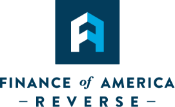Is the Reverse Mortgage as simple as some claim? Or is it a highly complex financial tool? Well, both. The reverse mortgage is simple to understand but can become complex when using it strategically for retirement financing.
A reverse mortgage is exactly what it sounds like: a mortgage in reverse. When you get a regular mortgage, you make payments on your home’s principal. Each payment means you’re building up equity in your home.
But when you get a reverse mortgage, you don’t make payments—you take payments from the equity you’ve built. Put simply, the bank is lending you back the money you’ve already paid on your home but charging you interest at the same time.
The concept is simple and in its most basic sense, a reverse mortgage is any loan program that defers the repayment obligation until a later date.
More specifically, it offers a homeowner the ability to use a portion of his/her home’s equity, it creates a lien, and it delays repayment until the home is no longer the primary residence of the last borrower. That is pretty basic and easy to understand. This holds true for all reverse mortgages, including the Federally Insured Home Equity Conversion Mortgage (HECM), single-purpose reverse mortgages offered by local government entities, and proprietary reverse mortgages.
However, the “concept” of a reverse mortgage and the “product” itself are quite different. Although HECM loans seem difficult to comprehend at first blush, they are actually simple to understand with the right information. All that is really needed is to educate clients on the program guidelines, the non-recourse feature, principal limit factors, product options, payout options, and costs.
Regulatory Changes
Only 15 months after the CFPB report was published, the program saw massive regulatory changes. These changes from 2013-2015 were intended to protect the HECM program, protect the consumer, and ensure the product was used as a sustainable solution for homeowners. Nevertheless, in a short period of time, the complexity of the reverse mortgage product doubled.
Does that mean the product is complicated? Not necessarily. The issue is not one of complexity, but rather a lack of familiarity. The HECM product is misunderstood simply because the terminology and concepts are somewhat unfamiliar.
As a result, industry training is quite different now, including the addition of the following concepts: initial disbursement limits, non-borrowing spouse, and financial assessment.
Reverse Vs. Forward Mortgage
While various forward product options each have their own credit requirements and debt-to-income ratios, most consumers already understand the dominant product – the 30-year fixed conventional loan. By contrast, the dominant reverse product (The HECM) and the terminology that accompanies it are relatively unknown.
Once again, the primary issue for mortgage originators, financial service professionals, and consumers alike is becoming familiar with the HECM product.
Do New Reverse Mortgage Strategies Increase the Complexity?
Yes. Wendy Peel, VP of Sales and Marketing at ReverseVision, notes that “much of the complexity lies within the varied strategic uses of the new reverse mortgage product.” Prior to 2013, reverse mortgage sales had little to do with financial planning and more to do with how much money the borrower could receive. In 2013, the program began limiting many borrowers to an initial disbursement of 60% for the first year. This, combined with an increased focus on sustainability, shifted the product back towards the financial planning uses for which it was originally intended.
Mathematically, research shows us the financial planning advantages are significant. Unfortunately, many loan originators, consumers, and most financial planners are still uncertain how to use reverse mortgages to open up retirement cash flow options and strategically manage portfolio draws in retirement.
Is it Worth Exploring?
Yes. Don’t let the unknown discourage you. A FAR reverse mortgage professional can answer your questions, summarize the program guidelines, and document the regulatory sources. The HECM product is the most under-utilized financial tool available to enhance the lives of older homeowners. We can easily solve the perceived complexity problem with proper education, not just offered to the loan originators, but also to financial service professionals, realtors, the media, and the clients themselves.
This article is intended for general informational and educational purposes only, and should not be construed as financial or tax advice. For more information about whether a reverse mortgage may be right for you, you should consult an independent financial advisor. For tax advice, please consult a tax professional.















I WANT TO KEEP UP TO DATE ON RETIREMENT TRENDS
Follow Us.